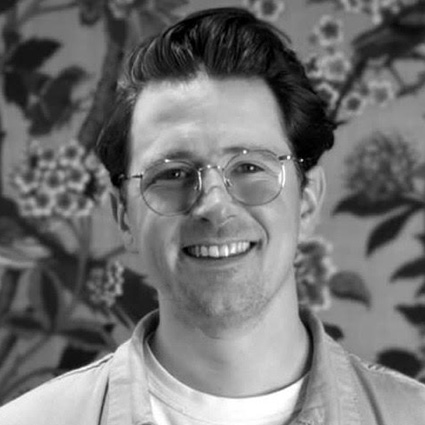The Year Ahead 2025: This is the era of world-building

The Year Ahead 2025 | Opinion
Brand-building is not enough. We have to be world-builders — and this requires craft and reverence for the brand, married with media smarts and technology to distribute and optimise.
The Marvel Cinematic Universe. The Potterverse. Middle Earth. Rivals on Disney+ kick-starting The JCMU (that’s the Jilly Cooper Cinematic Universe) and the righteously camp “bonkbuster” goings-on in Rutshire…
These are not just stories. They are not just entertainment brands. They are multi-strand narrative ideas. With multi-strand storylines and characters. Twists. Turns. Longevity.
We follow character arcs, phases, locations. They come with the promise of more. Anticipation for the next tale lasts years. And when it comes… attention is unwavering.
Visitable worlds
That’s because they are not one-dimensional. In fact, they’re not even three-dimensional. They are explorable. They have carefully, painstakingly, lovingly curated depth. They are visitable worlds.
We visit these worlds in cinemas, TV screens, computer games, on YouTube, in fan fiction, Wikipedia pages, Reddit threads, Discord servers, convention centres, parks, resorts, merchandise. A million manifestations — and yet they are distinct. Recognisable. Familiar. Everywhere.
That’s because they have a fanatical control on their brand world. From motifs to language to lighting to naming conventions to costume to music.
The pastel palette and centre framing of Wes Anderson. The recurring Red Apple cigarette brand in the Tarantino-verse. Listen to more than five notes of the Harry Potter theme and you can picture the turrets of Hogwarts, see the uniforms, say the spells.
A beast to be fed
Why is this relevant to brands? Compound creativity has been on the client Christmas lunch conversation list thanks to System1. The “cost of dull” has a £10m “boardroom level” ticket price attached to it, thanks to Peter Field, Adam Morgan and the IPA.
The attention debate rages on, with us finally acknowledging that you can’t plan media from a spreadsheet without accounting for the behaviour of the platform and the quality of the creative, thanks to the work of Karen Nelson-Field and Amplified Intelligence.
And the ever-increasing fragmentation of media is putting creative teams to the test. The platforms are hungry for more content. There is a beast to be fed. Our eyeballs are getting used to this and the algorithms are optimising to content quality.
So out with over-constrained media targeting. We want to watch good stuff and so the algo delivers. Creativity is the new targeting.
Great-quality content. Diverse in style and type. Relevant to key target consumer groups — and lots of it. This is the ingredients list to the recipe for brand success in the new media landscape.
Peter Field: It’s a ‘gross fallacy’ that startups don’t need brand-building ads
Tech at our fingertips
Thank goodness, then, that we all have a cinema-grade camera and production suite in our pocket.
In terms of quality, the camera we use to snap the coat-check ticket we inevitably lose throughout the party season easily competes with those used to shoot the most iconic and beautiful shots in the history of cinema.
So much so that movies are being shot on the iPhone. And not just indies — Danny Boyle has wrapped 28 Years Later, due to release in the summer, with the whole thing shot on adapted iPhone 15s. And an entire generation has grown up wielding this power effortlessly. We call them content creators.
Thank goodness, again, then, that there is an army of producers of exactly the kind of diverse, quality, relevant content we need. We can plan media activity across this diverse, fragmented and ever-changing landscape, safe in the knowledge that we can fill these canvases with what people want and expect.
Misattribution is real
Well. Hold your “made for social” horses.
I refer you back to our friends at Amplified Intelligence. With the amount of content out there from creators, everyday people, brands, publishers and increasingly AI in the social and digital space, the risk of misattribution is very real.
We are testing new native social media formats by shoehorning existing brand film assets into them while complementing this with wildly inconsistent creator content in which the branding is loose at best, unintelligible in much of it and barely there in most.
When we see a two-second snap of a creator eating a piece of chicken briefed by McDonald’s, if the branding isn’t distinct and ever present, guess what we see? We see some fast-food chicken in our news feed, think “I’d like some chicken” and head off to KFC.
Brand guardians
So, media people, I think our jobs have changed. We have moved on from the world where creatives are understandably annoyed by media agency people telling them to “put the branding up front” or tell it in “six seconds max”.
Now, we have to be the guardians of what makes the brand distinct and how the idea can live across this new landscape. We have to curate and police distinctiveness as consultants with the knowledge and expertise of how each medium is consumed.
We can no longer be one-dimensional, “one asset to rule them all”, lead-medium brand-builders.
World-builders
We have to be world-builders. Across the full media landscape. With a million touchpoints where the franchise of the brand can be explored. It requires the same level of distinctiveness as a cinematic universe — characters, colours, sounds, thematics, music… flexed and redesigned for each platform.
But always with the same sense you get when you tune in to a new Paddington film or load up a Star Wars game on your console. Familiar, comforting… but never boring.
That’s what’s coming for brands in 2025. It’s exciting. It requires craft, care and reverence for the brand, married with media smarts and technology to distribute and optimise this all at scale.
It requires creative and media to connect like never before. It requires all the possible storyline owners to know what “phase” of their brand world they are in. From social to PR to digital to creators and everything in-between.
2025 is the year we stop advertising and start world-building.
 Will Parrish is chief strategy officer at VCCP Media
Will Parrish is chief strategy officer at VCCP Media




